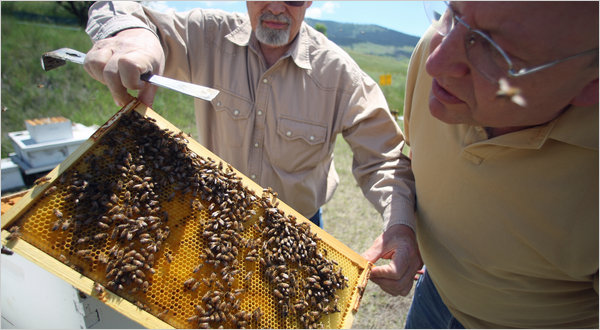
Possible Cause of Bee Die-Off Is Found
The New York Times
By KIRK JOHNSON
Published: October 6, 2010
DENVER — It has been one of the great murder mysteries of horticulture: what is killing off the honeybees?
Since 2006, 20 to 40 percent of the bee colonies in the United States alone have suffered “colony collapse.” Suspected culprits ranged from pesticides to genetically modified food.
Now, a unique partnership — of military scientists and entomologists — appears to have achieved a major breakthrough: identifying a new suspect, or two.
A fungus tag-teaming with a virus have apparently interacted to cause the problem, according to a paper by Army scientists in Maryland and bee experts in Montana in the online science journal PLoS One.
Phi Beta Iota: This is a very exciting story, and a real accomplishment by the US Army team applying Cold War bio-chemical skill sets to what may be the single greatest threat to US agriculture other than vanishing water. The Times did not, however, reference other causes of bee disorientation and dysfunction, such as cell phones and other electromagnetic pollutants.
Bees Vanish, and Scientists Race for Reasons (April 24, 2007)



